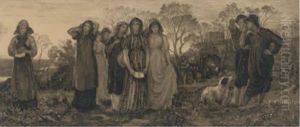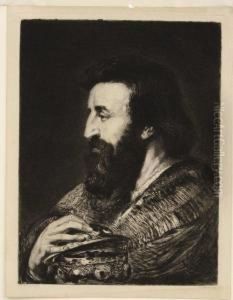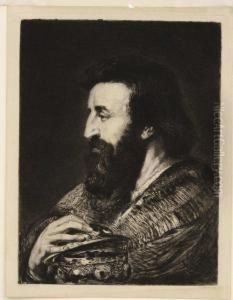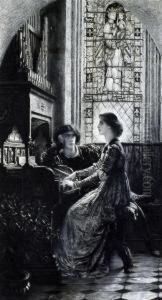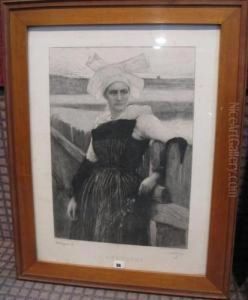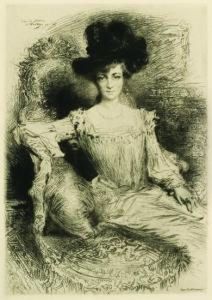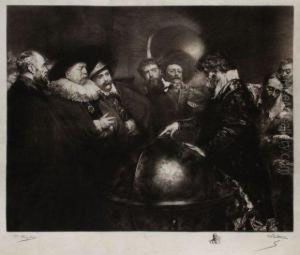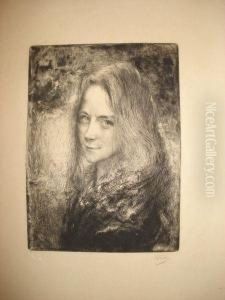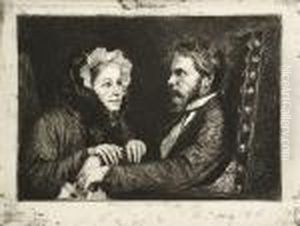Charles Albert Waltner Paintings
Charles Albert Waltner was a French engraver and artist born in Paris on May 22, 1846. He was known for his exceptional skill in engraving, which is the art of incising a design onto a hard, usually flat surface, by cutting grooves into it. Waltner's work typically involved reproducing the works of other artists, particularly paintings, into engravings that could be widely distributed and appreciated. His engravings are noted for their precision and clarity, capturing the nuances of the original artworks.
Waltner studied at the École des Beaux-Arts in Paris, which was the foremost art school in France. He was a pupil of the celebrated engraver Léopold Flameng, who had a significant influence on Waltner's technique and style. Waltner's talent was recognized early in his career, and he received the prestigious Prix de Rome in engraving in 1869. This award provided him with the opportunity to study in Rome at the Villa Medici, the French Academy in Rome, which was a significant honor and offered the chance to be exposed to the rich artistic heritage of Italy.
Throughout his career, Charles Albert Waltner exhibited his work at the Paris Salon, an annual exhibition held by the French Academy of Fine Arts. His engravings were well received both in France and internationally. He created engravings after the works of many famous painters, such as Rembrandt, Antoine Watteau, and Jean-Baptiste-Camille Corot. Waltner's engravings contributed to the popularization of these painters' works, as engravings were more accessible to the public than original paintings.
Waltner's engravings were not only artistic reproductions; they were also expressions of his own artistic vision. He was able to interpret and translate the essence of the original paintings into the medium of engraving, which required a deep understanding of light, shade, and composition. His ability to capture the mood and atmosphere of the original artworks made his engravings stand out in the field.
Charles Albert Waltner's work remains a significant contribution to the art of engraving. He passed away on April 18, 1925, leaving behind a legacy of craftsmanship and an extensive portfolio of engravings that continue to be studied and admired by art enthusiasts and historians. His engravings are held in various museum collections, attesting to their lasting artistic value.
